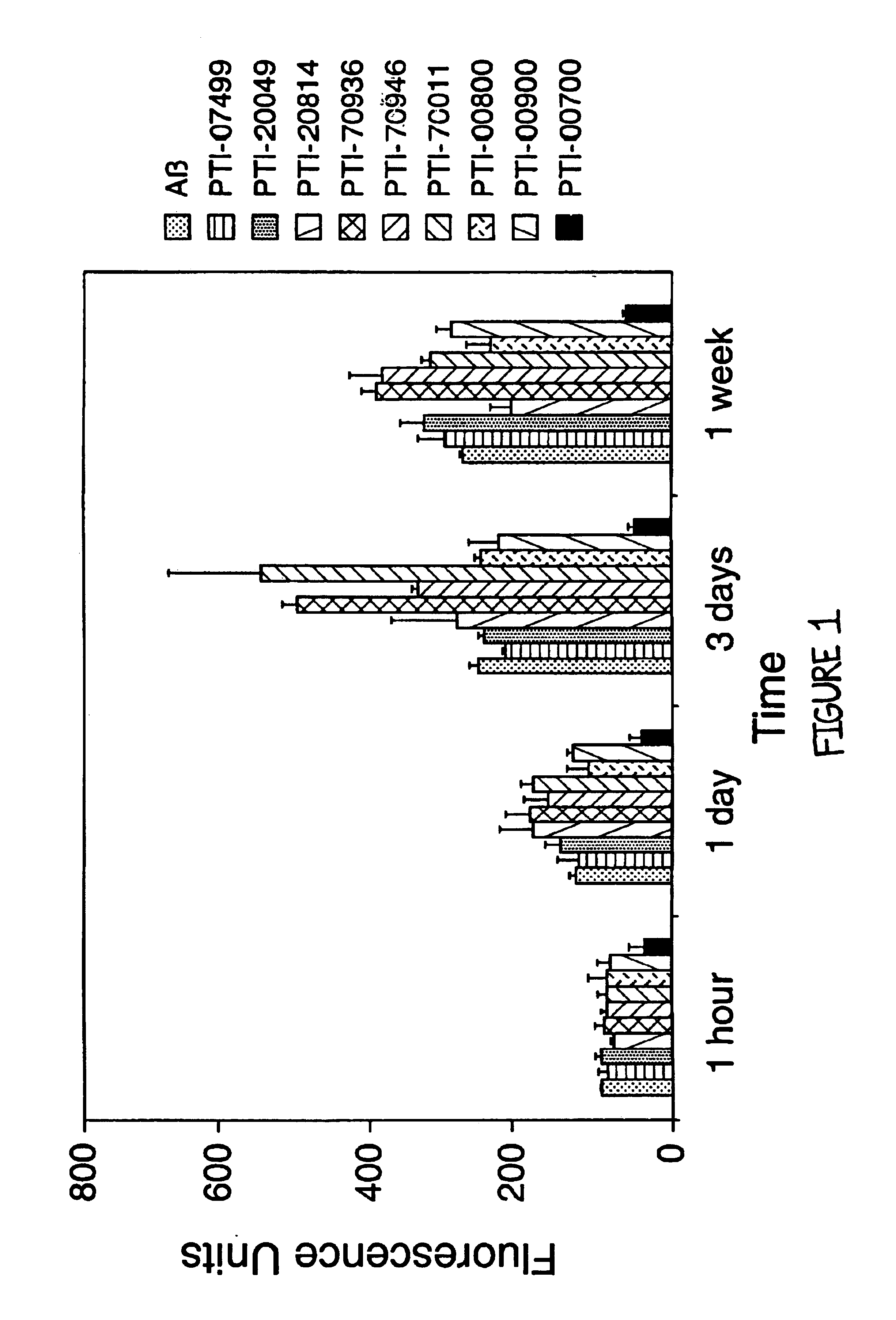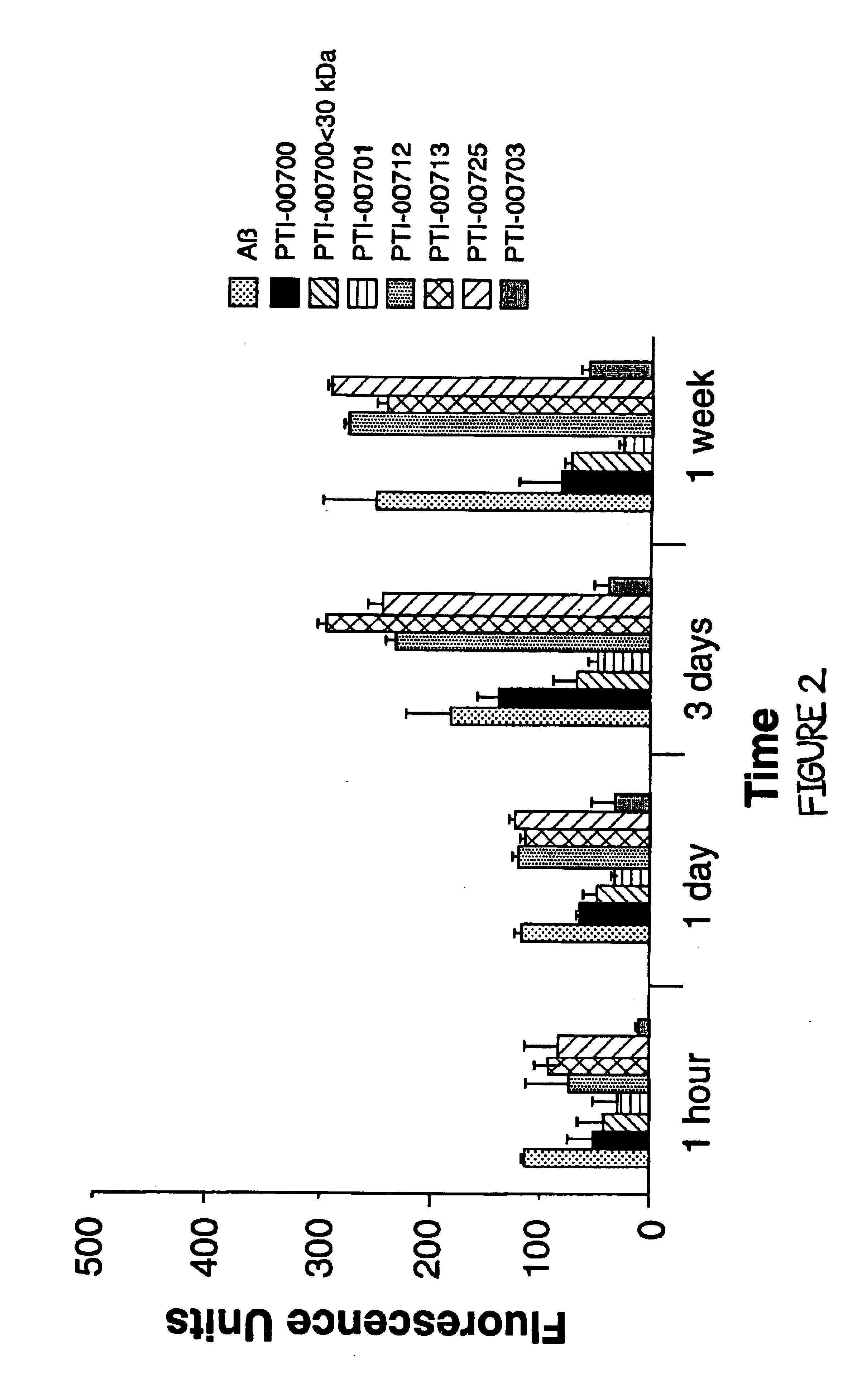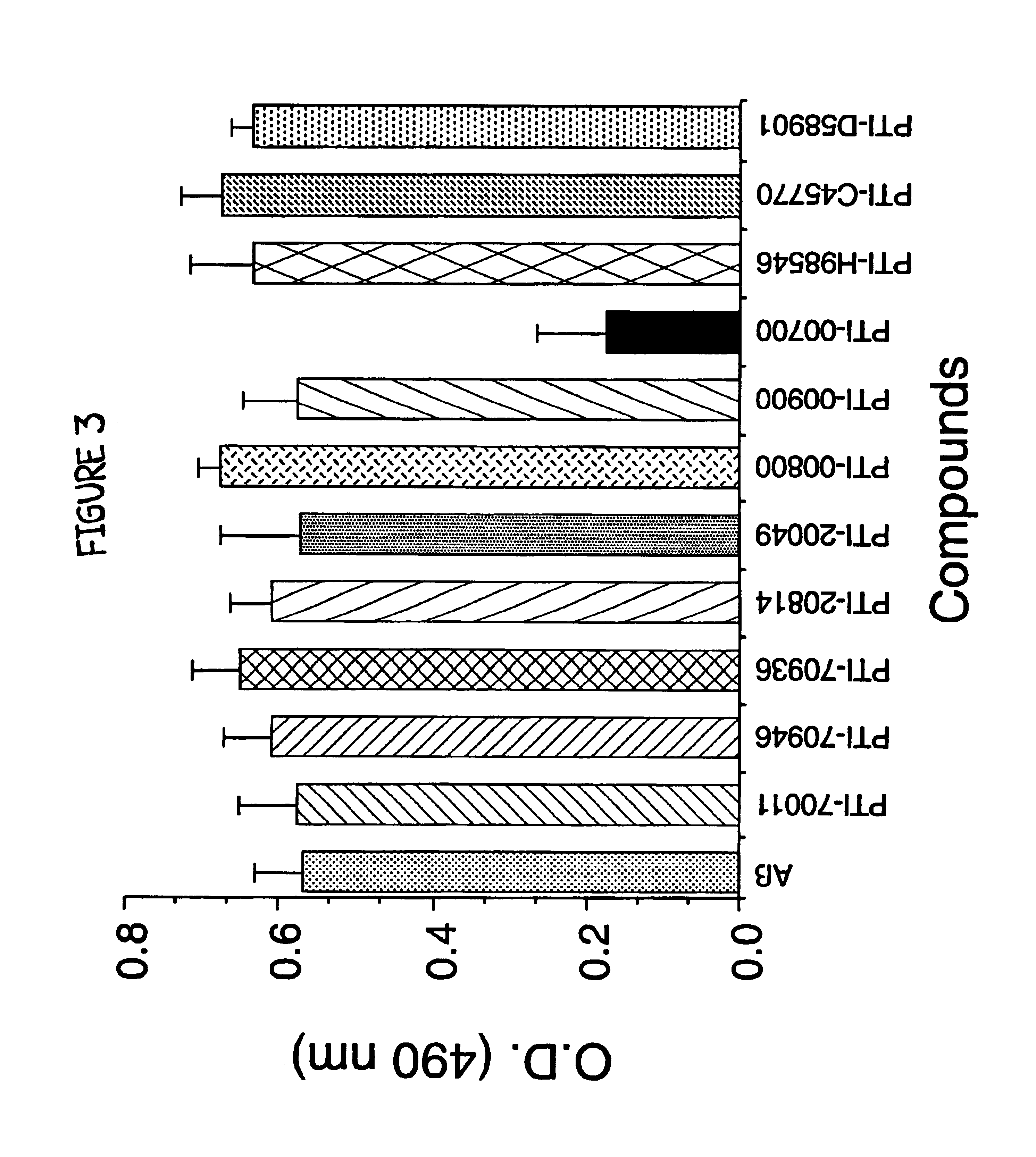Composition and methods for treating Alzheimer's disease and other amyloidoses
a technology for amyloidosis and alzheimer's disease, applied in the field of compositions and methods for treating alzheimer's disease and other amyloidoses, can solve the problems of toxic and neuronal cell death, no cure or effective treatment, and much work in alzheimer's disease, and achieve the effect of inhibiting a amyloid fibril growth and effective inhibitor of alzheimer's amyloid fibril growth
- Summary
- Abstract
- Description
- Claims
- Application Information
AI Technical Summary
Benefits of technology
Problems solved by technology
Method used
Image
Examples
example 1
Glucosamine (Sulfate Salt) Containing Uncaria tomentosa is a Potent Inhibitor of Alzheimer's Aβ (1-40) Amyloid Fibril Formation
[0075]A previously described method of measuring amyloid fibril formation utilizing Thioflavin T fluorometry (H Naiki et al, Lab. Invest. 65:104-110, 1991; H. Levin III, Protein Sci. 2:404-410, 1993; H. Levine III, Amyloid: Int. J. Exp. Clin. Invest. 2:1-6, 1995; H Naiki and K. Nakakuki, Lab. Invest. 64:374-383, 1996) was employed initially to identify potential therapeutic compounds capable of inhibiting Alzheimer's Aβ amyloid fibril formation. Using this sensitive assay, any decreases or increases in fluorescence was previously shown to correlate with a decrease or increase in the amount of amyloid fibrils (H Naiki et al, Lab. Invest. 65:104-110, 1991; H. Levine III, Protein Sci. 2:404-410, 1993; H Levine III, Amyloid: Int. J. Exp. Clin. Invest. 2:1-6, 1995; H Naiki and K. Nakakuki, Lab. Invest. 74:374-383, 1996), allowing one to determine the identificati...
example 2
Uncaria tomentosa is the Active Agent and a Potent Inhibitor of Alzheimer's Aβ (1-40) Amyloid Fibril Formation
[0080]The next studies were designed to reproduce some of the data initially acquired and to determine if the active agent which inhibited Aβ amyloid fibril formation was in fact Uncaria tomentosa. In these studies, the effects of various compounds on Alzheimer's Aβ (1-40) fibrillogenesis were again assessed using Thioflavin T fluorometry. For these studies, 25 μM of Aβ (1-40)(Bachem Inc., Torrence, Calif., USA; Lot #WM365) was incubated in microcentrifuge tubes at 37° C. for 1 week (in triplicate), either alone, or in the presence of 1.25 mM (ie. 1:50 M ratio of Aβ:test compound) of various compounds (except PTI-00700, PTI-00701 and PTI-00703 which were isolated and used as described below) in 150 mM Tris HCl, 10 mM NaCl, pH 7.0 (TBS). The compounds tested included glucosamine (sulfate salt) containing Uncaria tomentosa (PTI-00700), glucosamine (sulfate salt) containing Unc...
example 3
Glucosamine (Sulfate Salt) Containing Uncaria tomentosa (PTI-00700) Inhibits Alzheimer's Amyloid Fibril Growth
[0082]In Alzheimer's disease and other amyloidoses, amyloid fibril growth is believed to involve amyloid protein self-interactions (ie. Aβ-Aβ interactions). Any potential effective therapeutic agent for amyloid deposition, accumulation and / or persistence should also be capable of causing an inhibition of amyloid protein self-interactions. This is important for preventing any new amyloid fibril formation when treating Alzheimer's disease patients at early stages of the disease. ELISA methodologies (i.e. solid phase binding assays) were therefore used to identify compounds which were capable of inhibiting Aβ-Aβ interactions (i.e. Alzheimer's amyloid fibril growth).
[0083]Aβ (1-40) was first labelled with biotin according to the following protocol. 1 mg of Aβ (1-40) (Bachem Inc., Torrence, Calif., USA; Lot #WL934) was dissolved in 200 μl of PBS (pH 8.0) and incubated for 1 week ...
PUM
| Property | Measurement | Unit |
|---|---|---|
| flow rate | aaaaa | aaaaa |
| molecular weight | aaaaa | aaaaa |
| OD | aaaaa | aaaaa |
Abstract
Description
Claims
Application Information
 Login to View More
Login to View More - R&D
- Intellectual Property
- Life Sciences
- Materials
- Tech Scout
- Unparalleled Data Quality
- Higher Quality Content
- 60% Fewer Hallucinations
Browse by: Latest US Patents, China's latest patents, Technical Efficacy Thesaurus, Application Domain, Technology Topic, Popular Technical Reports.
© 2025 PatSnap. All rights reserved.Legal|Privacy policy|Modern Slavery Act Transparency Statement|Sitemap|About US| Contact US: help@patsnap.com



